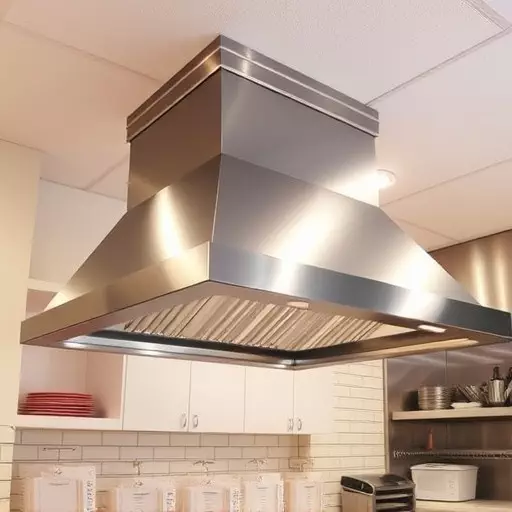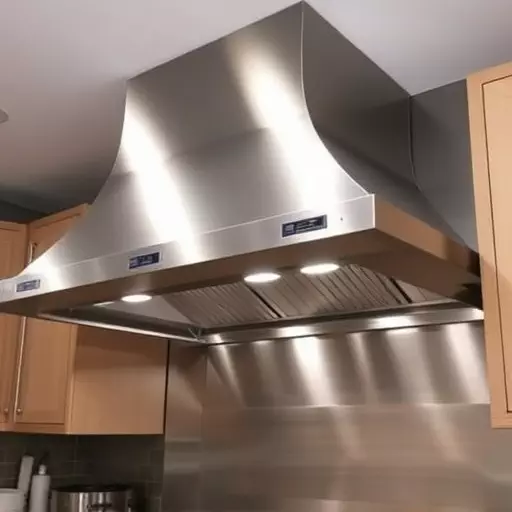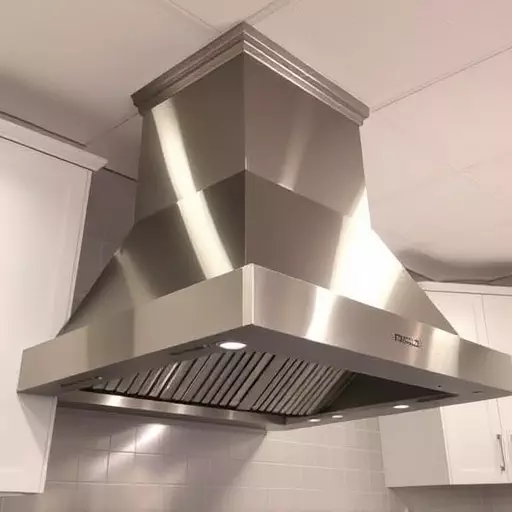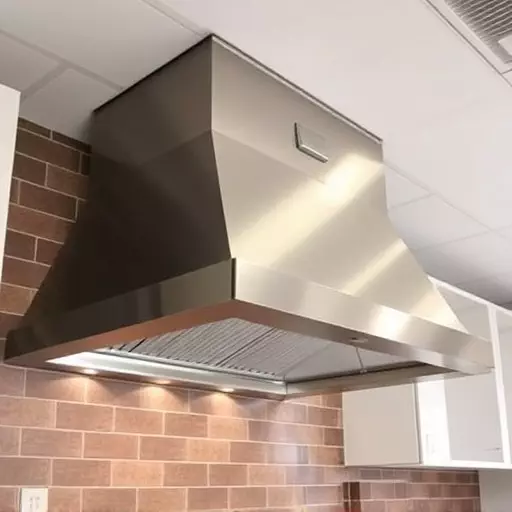Commercial Kitchen Hood Systems Spring Lake are essential for maintaining safe and healthy cooking environments. These advanced systems capture and expel cooking fumes through tailored designs and regular maintenance, including filter cleaning and duct clearance. Custom kitchen hood design services in Spring Lake ensure optimal ventilation efficiency while enhancing the aesthetic appeal of culinary spaces. Regular inspections and proactive upkeep extend the lifespan of these systems, prioritizing food safety and operational success for commercial kitchens.
In the bustling world of commercial kitchens, efficient ventilation is non-negotiable. Understanding and maintaining your commercial kitchen hood systems Spring Lake is a cornerstone for optimal food preparation safety and energy efficiency. This comprehensive guide delves into the intricacies of kitchen hood system installation, highlighting the pivotal role of regular maintenance. Additionally, we explore custom kitchen hood design options to ensure peak performance tailored to your unique space. By following these steps, you’ll master the process, enhancing both functionality and aesthetics.
- Understanding Commercial Kitchen Hood Systems Spring Lake: A Foundation for Efficient Ventilation
- The Role of Regular Maintenance in Kitchen Hood System Installation
- Customizing Your Space: Design Options for Optimal Performance
- Step-by-Step Guide to Ensuring Seamless Filter Maintenance
Understanding Commercial Kitchen Hood Systems Spring Lake: A Foundation for Efficient Ventilation

Commercial kitchen hood systems in Spring Lake play a pivotal role in ensuring efficient ventilation and maintaining high standards of air quality. These sophisticated systems are designed to capture, filter, and expel cooking fumes, smoke, and steam, creating a healthier work environment for kitchen staff. Understanding the foundation of these hood systems is essential when it comes to effective maintenance and optimal performance.
Proper installation and custom design go hand in hand in the world of kitchen hoods. A well-installed system tailored to the specific layout and cooking requirements of a commercial kitchen guarantees maximum efficiency. Custom kitchen hood design allows for innovative solutions, catering to unique culinary needs while ensuring compliance with safety regulations. Regular maintenance, including baffle filter cleaning or replacement, is crucial to keep these systems functioning at their best, thereby enhancing overall kitchen hygiene and safety.
The Role of Regular Maintenance in Kitchen Hood System Installation

Regular maintenance plays a vital role in ensuring the optimal performance and longevity of Commercial Kitchen Hood Systems Spring Lake. A well-maintained hood system is essential for any culinary establishment, as it helps to prevent grease build-up, which can lead to fires and costly repairs. By scheduling routine cleaning and inspections, kitchen managers can identify potential issues early on, such as damaged filters or blocked vents, allowing for prompt resolution. This proactive approach not only keeps the hood system functioning efficiently but also meets health and safety regulations.
In addition to fire prevention, regular maintenance contributes to a smoother cooking environment. Properly maintained hoods improve air quality by capturing and filtering airborne grease, smoke, and odors, creating a healthier workspace for kitchen staff. Moreover, regular cleaning and servicing can enhance the overall aesthetics of custom kitchen hood designs, ensuring they remain a stunning focal point in any culinary space.
Customizing Your Space: Design Options for Optimal Performance

In commercial kitchens, optimizing ventilation and ensuring efficient grease capture is paramount for safety and hygiene standards. Customizing your space with the right kitchen hood system installation plays a significant role in achieving optimal performance. Spring Lake’s experts understand that every kitchen is unique, so they offer custom kitchen hood design services tailored to specific needs. By evaluating factors like ceiling height, kitchen layout, and cooking equipment, they create solutions that not only enhance exhaust efficiency but also complement the overall design aesthetic.
A well-designed commercial kitchen hood system goes beyond functionality; it contributes to a pleasant working environment. Custom options allow for sleek, integrated designs that blend seamlessly with modern culinary spaces. Whether aiming for a minimalist look or a feature piece, experienced designers can craft hoods that meet both performance criteria and aesthetic preferences. This personalized approach ensures that your kitchen hood system installation becomes a key element in the success of your Spring Lake commercial kitchen.
Step-by-Step Guide to Ensuring Seamless Filter Maintenance

Maintaining your commercial kitchen hood systems in Spring Lake is an essential part of food safety and efficiency. Here’s a step-by-step guide to ensure seamless filter maintenance for your kitchen hood system installation, tailored for the unique needs of custom kitchen hood design.
1. Plan Regular Inspection: Schedule routine checks at least every three months or more frequently if your kitchen is high volume. This proactive approach helps identify potential issues early on.
2. Remove and Inspect Filters: Start by safely removing the hood’s filters, often accessible from the top or side panels. Thoroughly examine them for any debris buildup, oil residue, or damage. Rinse or clean filters according to manufacturer instructions, usually with warm water and mild detergent.
3. Replace if Necessary: If filters are heavily soiled or damaged, replace them immediately. Opt for high-quality replacement filters designed for your specific commercial kitchen hood systems to ensure optimal performance.
4. Reinstall and Tighten: After cleaning or replacing filters, reinstall them securely. Double-check that all bolts and brackets are tightly fastened to maintain the hood’s efficiency during operation.
5. Clean Exhaust Ducts: While filters are out, take this opportunity to clean the exhaust ducts as well. Buildup in these areas can compromise air flow and increase energy costs for your kitchen hood system installation.


